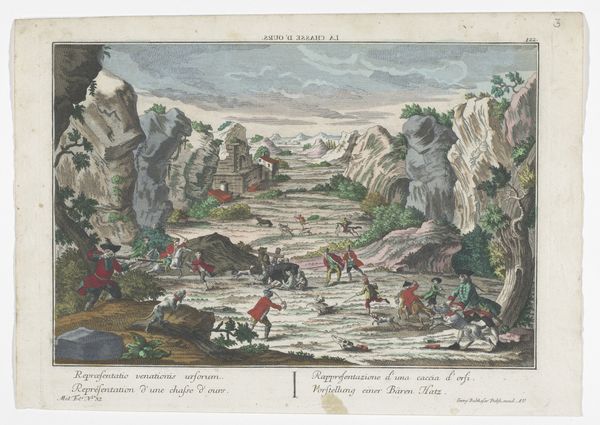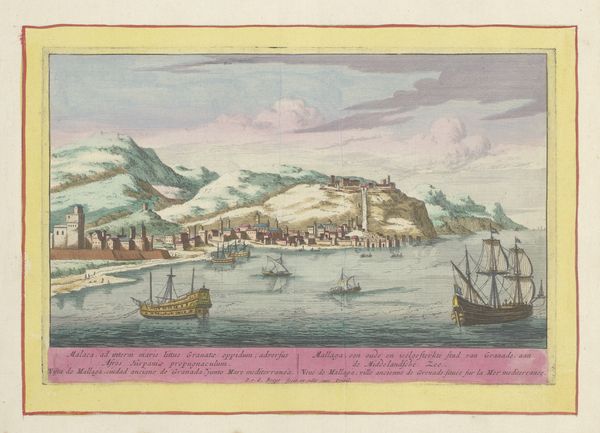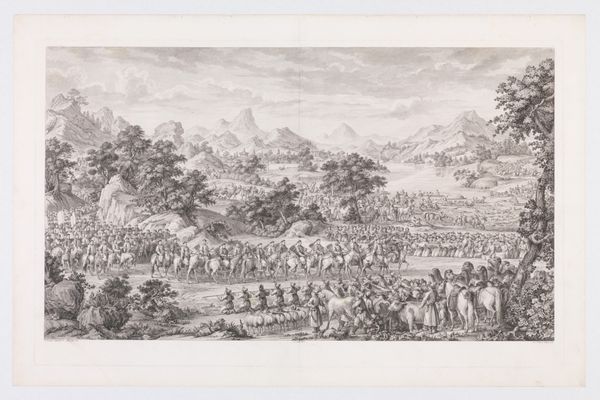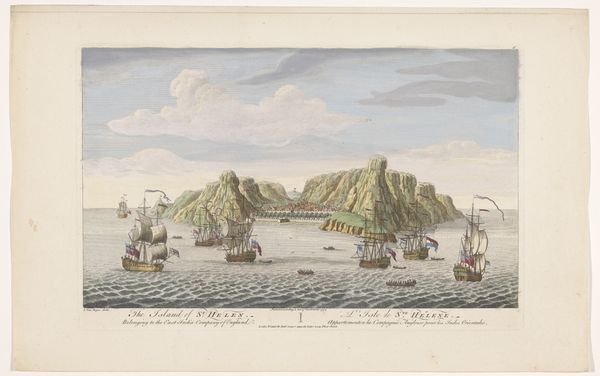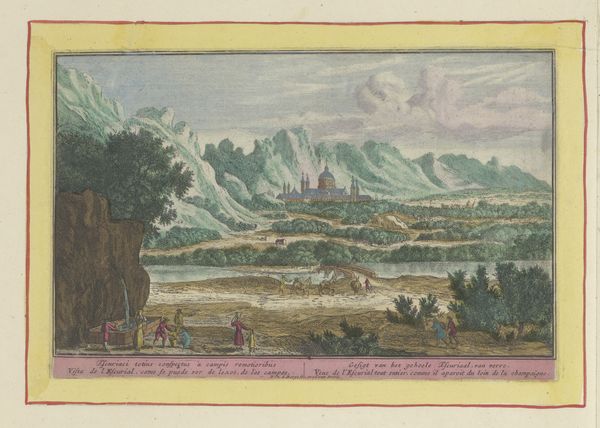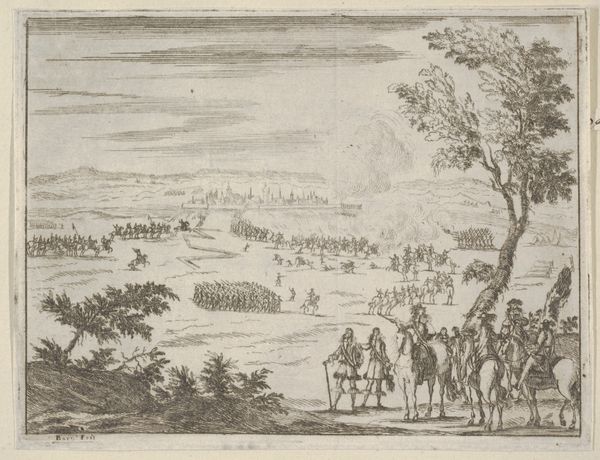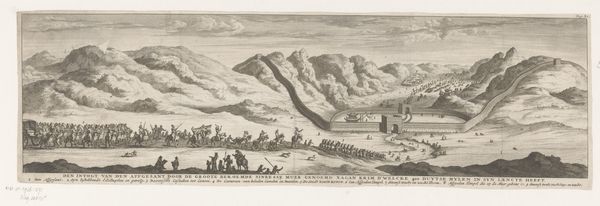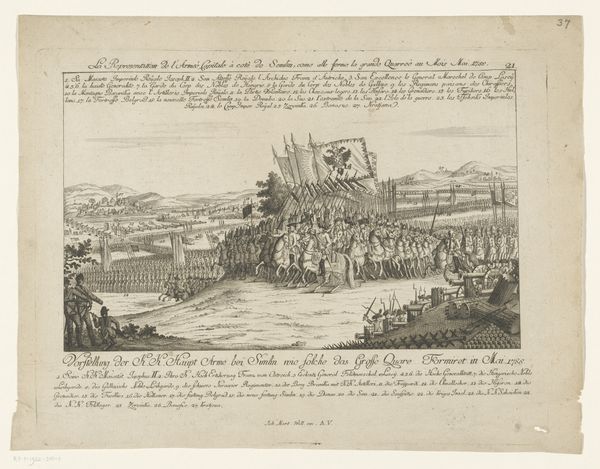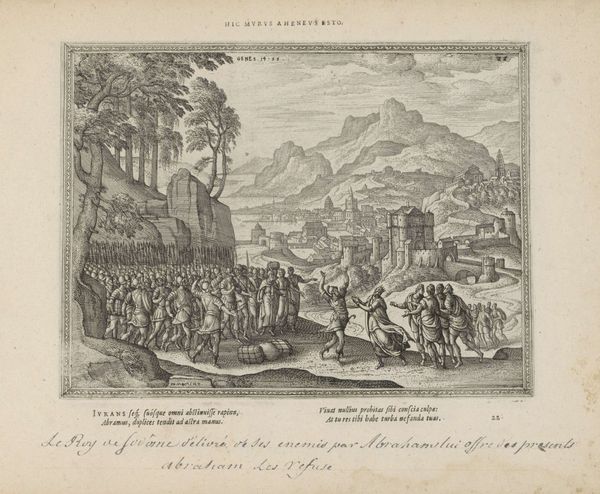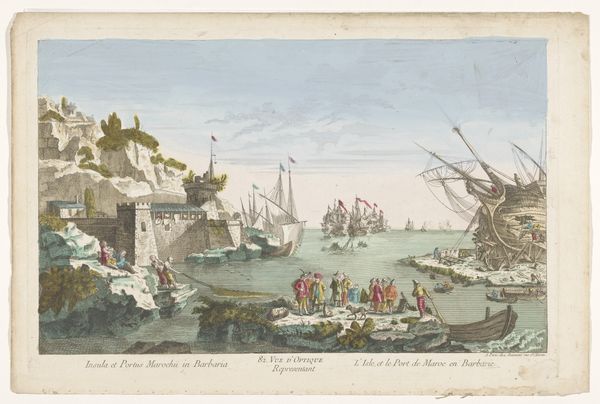
Dimensions: height 319 mm, width 427 mm
Copyright: Rijks Museum: Open Domain
Editor: Here we have "Reconciliation Between the Romans and the Sabines," created between 1742 and 1801 by Georg Balthasar Probst. It's a watercolor and engraving piece depicting a very large scene. The composition looks neatly balanced with mountains on each side facing the viewer. What strikes me most is the very active subject with many people within a vast landscape. What can you tell me about this piece? Curator: Indeed, what strikes me most is its dramatization of resolution, staged within a fraught intersection of gender, societal violence, and nation-building. Consider the role of the Sabine women: they intervened to stop the fighting between their fathers and their Roman husbands. Editor: So the image depicts them literally between the two armies, begging for peace? Curator: Precisely. Probst, working within the Baroque style, evokes a moment pregnant with meaning. Think about the power dynamics: these women, initially victims of abduction, become peacemakers. Their plea transcends the immediate conflict and speaks to a larger struggle for identity and agency. Editor: That's really interesting. Does the landscape play a role? Curator: Absolutely. The landscape is more than just a backdrop. It emphasizes the divide, visually mirroring the chasm between the warring factions. It represents both the physical and ideological spaces that need to be bridged for reconciliation. Also, consider that conflict and reconciliation play key roles in Baroque paintings. Editor: I never considered the setting contributing to the overarching themes of conflict, peace and identity. It gives the artwork another dimension. Curator: Right? By acknowledging such complexities, we can recognize this work as more than a historical representation. Editor: Well, that’s given me a lot to think about – thank you!
Comments
No comments
Be the first to comment and join the conversation on the ultimate creative platform.

